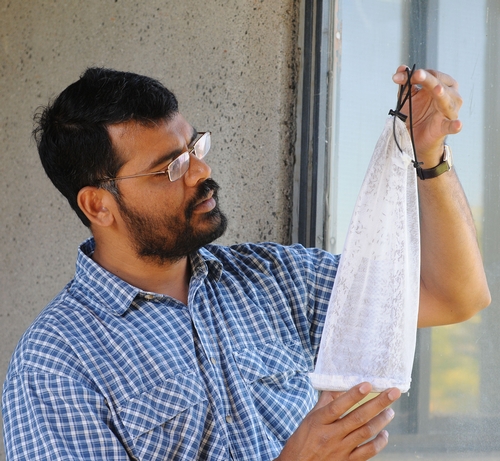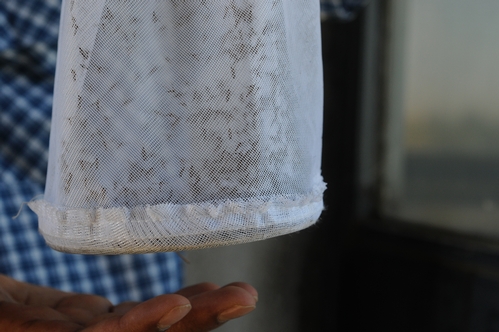- Author: Kathy Keatley Garvey
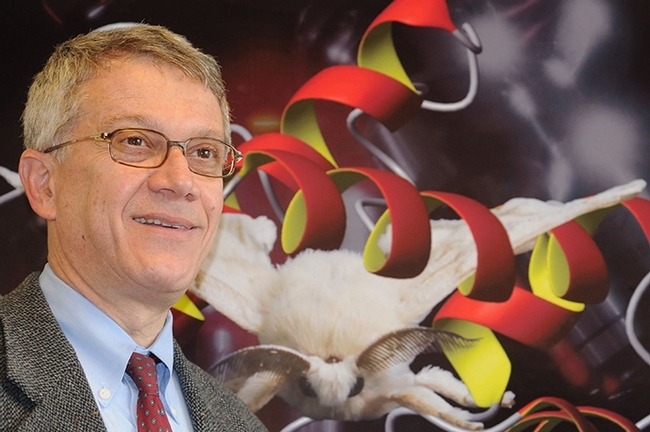
You'll hear about a variety of insects when the international symposium, “Insect Olfaction and Taste in 24 Hours Around the Globe,” takes place beginning at 9 a.m., Pacific Daylight Time (PDT), Wednesday, Aug. 11.
The 24-hour Zoom symposium has already drawn more than 1100 registrants from 66 countries, according to UC Davis distinguished professor Walter Leal, one of the three co-hosts. It's free and open to all interested persons. You can register at https://bit.ly/3k68c2m.
The speakers will focus on a wide variety of insects, including three species of mosquitoes (Culex, Aedes and Anopheles); honey bee (Apis mellifera); fruit flies (Drosophila melanogaster, Drosophila sechellia, and Drosophila suzukii); sand flies (the blood-sucking dipteran flies); cotton bollworm (Helicoverpa armigera); housefly (Musca domestica); cabbage butterfly (Pieris rapae); and the American cockroach (Periplaneta americana).

“We will have 15 invited (keynote) and 36 contribution presentations,” said Leal, who will host the PDT segment. One of the interviews will feature olfaction research pioneer Karl-Ernst Kaissling of Germany.
Co-hosts with Leal are Wynand van der Goes van Naters of Cardiff University, UK, who will host the British Summer Time (BST) segment; and Coral Warr of La Trobe University, Australia (formerly of the University of Tasmania), host of the Australia Eastern Standard Time (AEST) segment. The trio, along with Karen Menuz (PDT), Wei Xu (AEST), and Emmanuelle Jacquin-Joly (BST), will moderate the symposium.

“The attendees will be engaged by questions and answers,” announced Leal, a UC Davis distinguished professor with the Department of Molecular and Cellular Biology and a former chair of the Department of Entomology (now the Department of Entomology and Nematology). “We will give priority to questions from students, postdocs, and early career professionals, but will attempt to address everyone's questions. Attendees can ask anonymous questions.” Many of the attendees would not otherwise have an opportunity to travel to an international symposium, he added.
The first segment--the PDT segment hosted by Leal--begins with a welcoming address by John Hildebrand of the University of Arizona, Foreign Secretary of the National Academy of Sciences. Presentations by Josefina del Marmol of The Rockefeller University, New York, and Jon Clardy of Harvard Medical School will follow. “There will be four keynote lectures and 10 contributed presentations,” Leal said.
The last presentation in this segment, by Ke Dong of Duke University, will bridge with the AEST segment, hosted by Warr. It will include two keynote lectures and 14 contributed presentations. Then, a keynote lecture by Richard Benton of the University of Laussanne will bridge with the BST segment, hosted by van der Goes van Naters. It will include six keynote lectures and 12 contributed presentations. After the last lecture by John Pickett of Cardiff University) the symposium returns to UC Davis for closing remarks.
One of the keynote speakers in the PDT segment is Zain Syed of the University of Kentucky, a former postdoctoral researcher in the Leal lab at UC Davis.
For a list of the keynote speakers, those who will give presentations, and other logistics, see the UC Davis Department of Entomology and Nematology website.
The registrants hail from 66 countries: Algeria, Argentina, Australia, Austria, Belgium, Brazil, Bulgaria, Burkina Faso, Canada, Chile, China, Colombia, Costa Rica, Denmark, Dominica, Ecuador, Egypt, Ethiopia, Finland, France, Germany, Ghana, Greece, Guatemala, Hungary, India, Iraq, Ireland, Israel, Italy, Japan, Kenya, South Korea, Lebanon, Mexico, Mozambique, Nepal, Norway, Pakistan, Peru, Portugal, Puerto Rico, Réunion, Russia, Singapore, South Africa, Spain, Sri Lanka, Sudan, Sweden, Switzerland, Taiwan, Tanzania, Cayman Islands, Czech Republic, The Netherlands, The Philippines, United Kingdom, United States, Trinidad and Tobago, Tunisia, Turkey, Uganda, United States Minor Outlying Islands, Uruguay, and Vietnam.
For updates, videos and more information, follow Leal on Twitter at @wsleal2014.
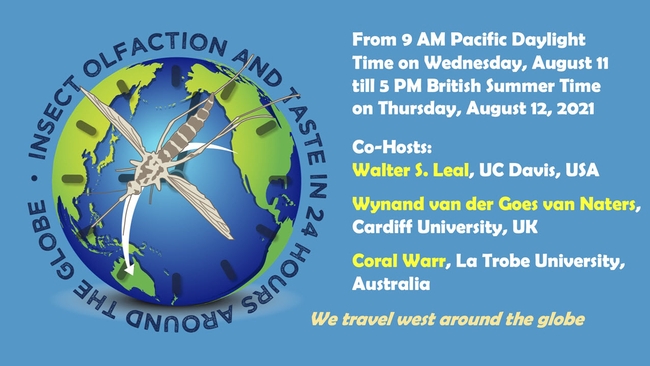
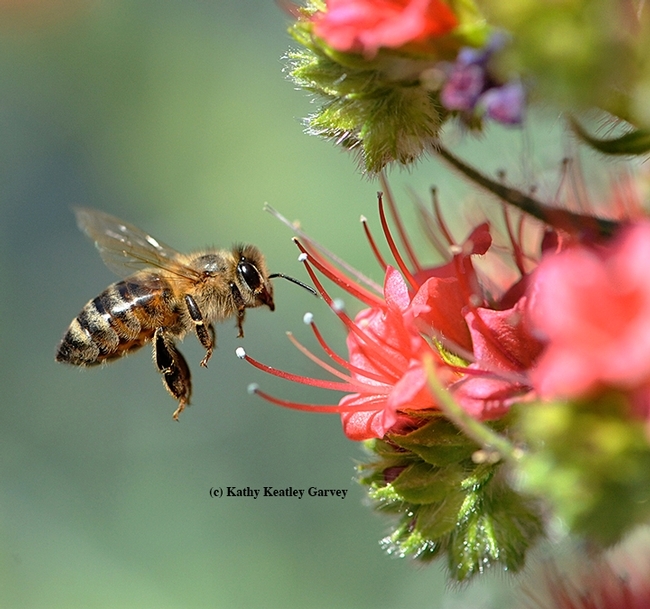
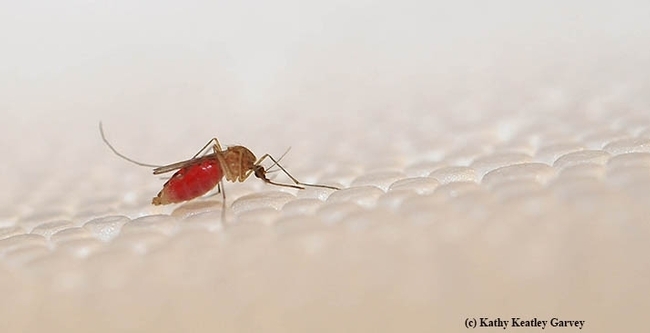
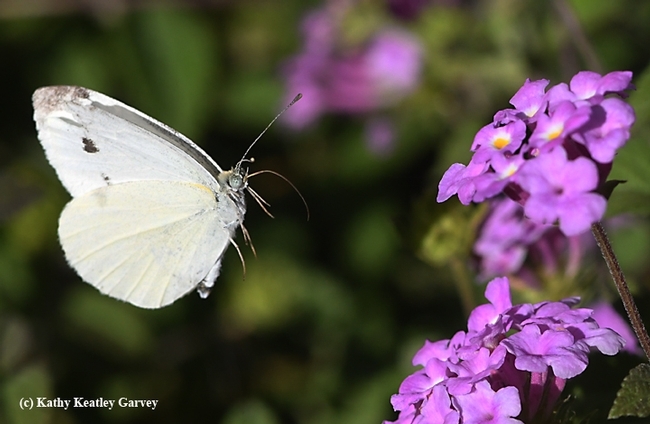
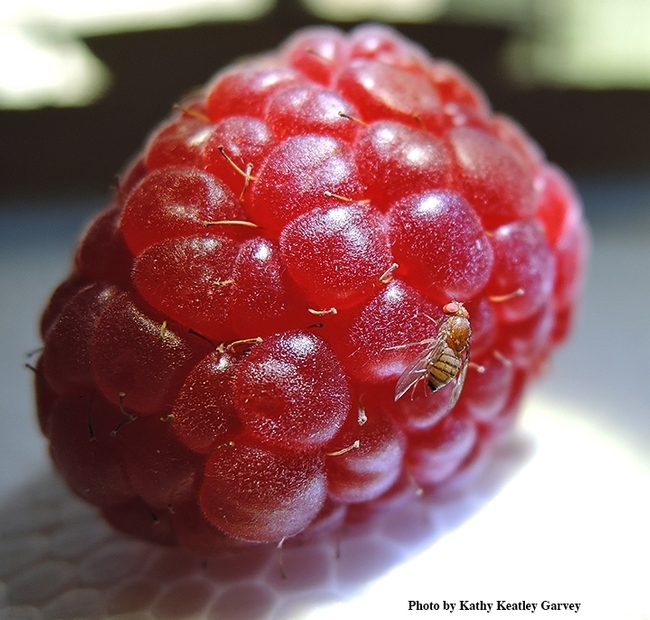
- Author: Kathy Keatley Garvey
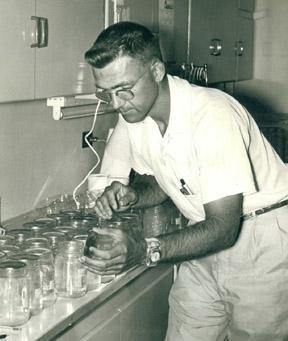
Thanks to the generosity of his family, his work is continuing through memorial research grants to outstanding graduate students at the University of California, Davis.
Hazeltine, a native of San Jose, was a U.S. Navy veteran who studied entomology at UC Berkeley and received his doctorate in entomology from Purdue University in 1962. He managed the Butte County Mosquito Abatement District, Oroville, from 1966 to 1992, and the Lake County Mosquito Abatement District from 1961-1964.
He was an ardent supporter of the judicious use of public health pesticides to protect public health, remembers Bruce Eldridge, emeritus professor of entomology at UC Davis and former director of the (now folded) statewide UC Mosquito Research Program. Eldridge eulogized him at the 2005 annual meeting of the American Mosquito Control Association (AMCA) as "a man who made a difference." The AMCA journal published his eulogy in its 2006 edition. (See http://entomology.ucdavis.edu/files/154217.pdf)
"Bill was a medical entomologist who had a varied career in the field of mosquito biology and control, but he will forever be remembered as a man who fought in the trenches of the pesticide controversy from 1960 until the end of his life, and who made the safe and efficient use of pesticides in public health a personal crusade," Eldridge said.
In his memory, his three sons--Craig Hazeltine of Scottsdale, Ariz., Lee Hazeltine of Lincoln, formerly of Woodland, and the late Jeff Hazeltine (1958-2013)—established the UC Davis Bill Hazeltine Graduate Student Research Awards in 1997. Each year they travel to Davis to honor the recipients at a luncheon, timed with their attendance at a scholarship and fellowship celebration, hosted by Dean Helene Dillard, UC Davis College of Agricultural and Environmental Science.
The 2017 recipients are
- Olivia Winokur of the Christopher Barker lab, Department of Pathology, Microbiology and Immunology, School of Veterinary Medicine. Her funded project ($2425): “Identifying Aedes Mosquito Eggs Using Hyperspectral Imaging: a Rapid, Low-Cost, Non-Destructive Method to Improve Mosquito Surveillance and Control.”
- Maribel "Mimi" Portilla of the Sharon Lawler lab, UC Davis Department of Entomology and Nematology. Her funded project ($2032): “The Management of Invasive Weeds and their Effects on Larval Culex mosquitoes."
Winokur is also the newly announced 2018 recipient of $3,094 to investigate Aedes aegypti immune response to Zika virus. (Portilla expects to receive her doctorate in six to 12 months.)
Olivia Winokur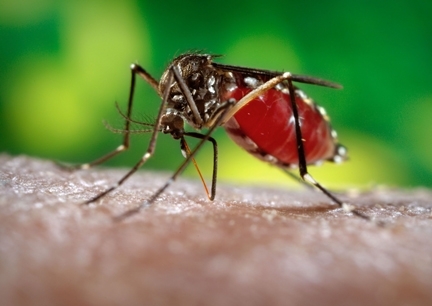
“Aedes aegypti and Aedes albopictus are mosquitoes capable of transmitting dengue, chikungunya, yellow fever, and Zika viruses,” Olivia Winokur explained in her 2017 application. “These species are invasive and present in California and continue to spread, increasing the likelihood of local transmission of these devastating viruses. Additionally, Aedes notoscriptus, an Australian mosquito whose vector competence for many viruses is unknown, has been detected in Los Angeles and is likely to spread in the state. Aedesmosquitoes are readily detected using ovitraps, a cheap and effective sampling method to detect the presence of gravid females. Ovitraps are especially useful when mosquito populations are low as traps for adult Aedes are unreliable. Once collected, the eggs cannot be differentiated using a stereomicroscope. Traditionally, identifying Aedes eggs collected in ovitraps requires hatching and rearing to adult for visual identification, which is time consuming and leads to a time lag for control, potentially allowing invasive species to spread without intervention.”
“Currently, I am developing a non-destructive, low-cost method to rapidly identify Aedes eggs,” Winokur wrote. “I have shown that species-specific surface morphologies of the exochorion can be used to differentiate species using electron microscopy. This method is expensive and therefore not a realistic surveillance technique. We can, however, exploit these species-specific surface morphologies in another way to identify Aedeseggs. Slight changes in morphological characteristics can be captured with high spatial resolution proximal sensing imaging, termed hyperspectral imaging.”
Winokur is testing “the use of hyperspectral imaging to differentiate between eggs collected from lab colonies of native and invasive Aedes mosquitoes in California. Preliminary data indicate this method shows promise for identifying species and warrants further testing. Once I have created species-specific reflectance profiles and validated my identification method using colony eggs, I will collect field eggs and validate the identification method using these field eggs.” She is working with hyperspectral imaging expert Christian Nansen, agricultural entomologist and assistant professor, UC Davis Department of Entomology and Nematology, on the project.
Winokur describes hyperspectral imaging as “a powerful tool that recognizes slight changes; therefore, we need to ensure that all samples are collected and conditioned the same way before testing. Samples must be imaged directly on the oviposition paper because exochorion cells are damaged by the ‘glue' the female uses to attach her eggs to the substrate; imaging removed eggs leads to inconsistent reflectance profiles. This method for rapidly identifying Aedes eggs will allow for quick response to the detection of invasive Aedes mosquitoes.”
After finishing her Ph.D., Winokur plans to remain in academia, but “I'm unsure exactly what that will look like! I really enjoy research, teaching, and mentoring so I'd like to have a career where I can do all of these. I also plan to have a career where I can conduct translational research with broad global health implications, engage non-scientists, create tools to help decision makers mitigate vector-borne disease burden worldwide, and encourage interest and diversity in STEM (science, technology, engineering and mathematics).”
Maribel "Mimi' Portilla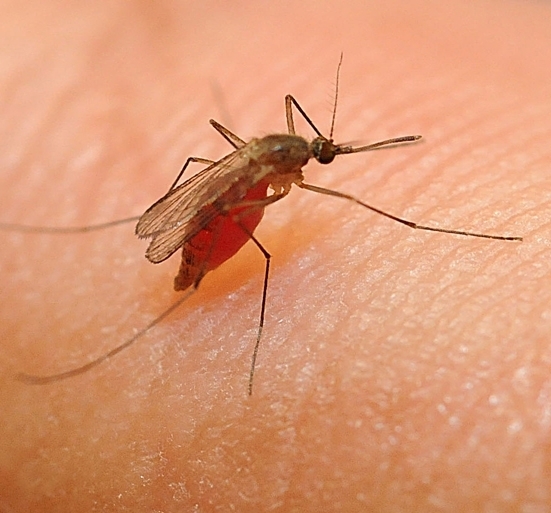
“At UC Berkeley School of Public Health, I was able to study health and disease within a larger context, and learned to consider the biological and the social determinants of disease. As I completed my degree, I realized I really missed the research experiences I had as an undergraduate. So, I looked for a way to bridge my new-found passion for public health and basic science research. This led me to UC Davis, where I learned about One Health and am now pursuing a Ph.D in medical entomology. Medical entomology is a perfect example of a One Health field, where I can seek out how interactions between humans and animals impact health. I am particularly interested in researching how disease risk may change as people manipulate the environment."
Her academic life revolves around writing her dissertation; teaching UC Davis classes (she's taught entomology, general biology and One Health classes); research; and public outreach. Since 2012, she has mentored some 30 undergraduate students on developing and executing their research experiments. She praised the “the diversity of my interns; they each brought such important and unique perspectives to the project.”
What are her career plans?
“Due to my diverse interests and skill set, I am very open about my career choices," Portilla said. "I have extensive teaching experience, and would love to be a professor with both teaching and research opportunities. However, there are many opportunities beyond academia. My research is introducing me to many other ways in which my work and research can help keep people safe and healthy. I hope to develop a strong research skill set while at UC Davis, and find a career path which takes advantage of my diverse abilities and love for One Health and Public Health."
Portilla mentioned pursuing a career as a teacher in a small liberal arts school to teach public health, general biology and global diseases classes, as well as do outreach and research. “I'm more of a scientist than an entomologist,” she said.
She may also pursue a career working in vector-control health education at the county, district or state level. “I'm open at this point,” Portilla said. Overall, she is geared toward improving public health outcomes through healthier environments. “I care about how outcomes affect the larger population,” she said.
Meanwhile, it's good to see that William Emery Hazeltine's passion for medical entomology lives on, and to see UC Davis graduate students benefit, all thanks to the generosity and thoughtfulness of the Hazeltine family. The "family" of 42 recipients since 1997 includes Christopher Barker, Winokur's major professor, who received a Hazeltine research award in 2006.
The complete list of recipients:
- 2018: Olivia Winokur (newly announced)
- 2017: Maribel "Mimi" Portilla and Olivia Winokur
- 2016: Sandy Olkowski, Maribel “Mimi” Portilla and Stephanie Kurniawan
- 2015: Sandy Olkowski, Maribel “Mimi” Portilla and Stephanie Kurniawan
- 2014: Martha Armijos, Elizabeth “Lizzy” Glennon and Rosanna Kwok
- 2013: Jenny Carlson, Elizabeth “Lizzy” Glennon and Sandy Olkowski
- 2012: Jenny Carlson, Kelly Liebman and Sandy Olkowski
- 2011: Brittany Nelms Mills, Kelly Liebman and Jenny Carlson
- 2010: Tara Thiemann and Jenny Carlson
- 2009: Kelly Liebman and Wei Xu
- 2008: Ashley Horton and Tara Thiemann
- 2007: Lisa Reimer and Jacklyn Wong
- 2006: Christopher Barker and Tania Morgan
- 2005: Nicole Mans
- 2004: Sharon Minnick
- 2003: Hannah Burrack
- 2002: Holly Ganz and Andradi Villalobos
- 2001: Laura Goddard and Linda Styer
- 2000: Laura Goddard
- 1999: Linda Boose Styer
- 1998: Larisa Vredevoe
- 1997: John Gimnig
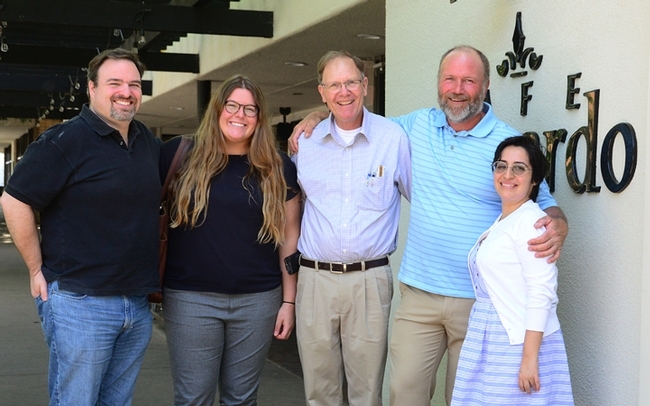
- Author: Kathy Keatley Garvey
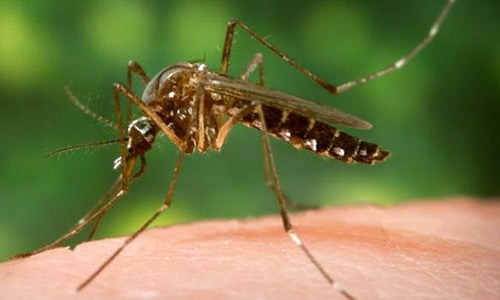
Native Brazilian Walter Leal, chemical ecologist and professor in the UC Davis Department of Molecular and Cellular Biology, is there.
So is the mosquito.
At the symposium today, Constancia Ayres, research coordinator of the Oswaldo Cruz Foundation (Centro de Pesquisa Aggeu Magalhaes/FIOCRUZ, considered one of the oldest and most prestigious scientific research institutes in South America), reported that the common southern house mosquito, Culex quinquefasciatus, may be a potential vector of the Zika virus.
Studies in the Ayres lab confirmed that Culex quinquefasciatus infected with Zika (isolated from local patients) showed high transmission rate (as determined by virus replication in the salivary glands).
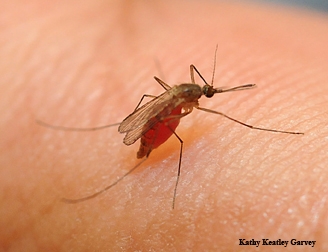
Of course, these studies were done in the lab, not the field, and this is the beginning of the research.
We asked medical entomologist William Reisen, editor of the Journal of Medical Entomology, and professor emeritus, Department of Pathology, Microbiology and Immunology, UC Davis School of Veterinary Medicine, about this.
"In California less than 3 percent of the Culex including Cx. quinquefasciatus have been found to feed on humans, even in cities like Los Angeles, where humans are the most numerous host," Reisen said in an email. "Therefore, even if they are susceptible to infection, the probability of a female feeding on humans to acquire and then refeed on humans to transmit would be 0.03 x 0.03 = 0.0009 or a rare event indeed. That said, there are areas of the world where quinquefasciatus feeds predominantly on humans in domestic settings. (See his research paper, Host Selection Patterns of Some Pakistan Mosquitoes (U.S. National Library of Medicine, National Institutes of Health).
In his research paper on Pakistan mosquitoes, Reisen mentions Culex pipiens fatigans, now known as Culex quinquefasciatus. Its feeding patterns "varied opportunistically with host availability," he wrote in the abstract. Resting in cattle sheds during the winter, it "fed on birds and bovids, changing to man and bovids during the spring and then to man and birds during summer."
Medical entomologist Thomas Scott, distinguished professor of entomology (now emeritus) of the UC Davis Department of Entomology and Nematology, is a global authority on Aedes aegypti, which transmits dengue, yellow fever, chikungunya and the Zika viruses.
"Vector competence studies in the lab is valuable information, but before we come to the conclusion that Culex quinquefasciatus is an important contributor to transmission of Zika virus, the lab results would need to be confirmed," Scott told us. "Other laboratories and appropriate field studies would need to be carried out in areas where Zika virus is being transmitted to confirm that this species is naturally infected and is regularly biting people. Although it is a potentially important discovery that would change they way we think about Zika virus transmission, it would be wise to carefully explore all of the details necessary to incriminate a mosquito vector before coming to a strong conclusion."
UC Davis medical entomologist Anthony Cornel of the Kearney Agricultural Research and Extension Center and UC Davis Department of Entomology and Nematology, weighed in: "I have to examine the vector competence data carefully to determine its infectivity dose relative to Aedes aegypti. If Culex quinquefasciatus does play an additional role in transmission then it would be of even greater concern because the threat of autochthonous transmission will occur in areas other than where Aedes aegypti is found in California. Culex quinquefasciatus also feed on people but do so at dusk and at night."
"Brazil could be facing a greater fight against the zika virus than previously feared as researchers investigate whether the common mosquito is transmitting the disease," Moraes wrote in the article, headlined "Brazilian Experts Investigate if 'Common Mosquito' is Transmitting Zika Virus."
"The Aedes aegypti species of mosquito was thought to be solely responsible for spreading the virus," Moraes pointed out. "But scientists are now studying whether the Culex mosquito--the variety (species) most commonly found in Brazil--could also be passing on the infection."
Constancia Ayres was quoted as saying: "This may be the reason for the virus replicating faster. The interaction of the mosquito with the virus may explain the epidemiological profile of disease transmission.”
Meanwhile, the headlines continue as research proceeds.
The Outbreak News Today related that researchers in the Ayres lab "are now investigating the possibility that other, non-Aedes mosquito species, might carry and spread Zika and Chikungunya."
"The concern is that the Culex mosquito--which is 20 times more prevalent than the Aedes variety in Brazil-- might also play some role in the rapid spread of these viruses," Outbreak News Today noted. "Researchers hope to have some answers in a few weeks,"
Valor.com.br is hot on the story as well. Reporter Marina Hawk emphasized that the work was done in the lab, but field collection is underway.
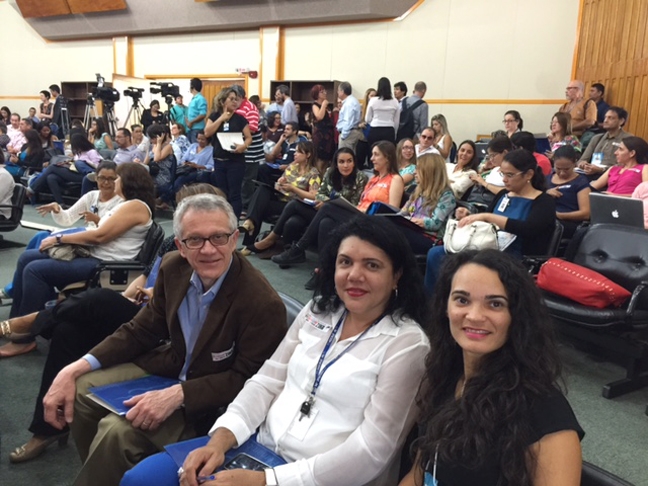
- Author: Kathy Keatley Garvey
Chemical ecologist Zain Syed of the Walter Leal lab, University of California, Davis, knows just where to find mosquitoes for his research.
Rice fields.
He's been collecting up to 3000 mosquitoes a night along the Yolo Causeway, located on Interstate 80 between Davis and West Sacramento. The Yolo basin is home to the Vic Fazio Yolo Wildlife Area.
It's easy to catch mosquitoes.Syed is using carbon-dioxide traps to capture host-seeking mosquitoes. The female skeeters are seeking a blood meal (you, if you're around there). His traps entice them to "come on in."
"Once mosquitoes are lured to the vicinity," Syed says, "a suction fan traps them and sends them to the sleeve, a mesh bag that holds mosquitoes."
The mesh bag below holds 2000 mosquitoes. They are mostly Culex tarsalis, but also some Culex pipiens.
Culex mosquitoes are known for transmitting West Nile virus.
Syed and Leal are known for uncovering the mode of action for DEET, the chemical insect repellent used by more than 200 million people worldwide. Their groundbreaking research last year found that DEET doesn't jam a mosquito's senses or mask the smell of the host, as scientists previously thought for some 50 years. Mosquitoes avoid DEET because it smells bad to them.
Syed recently won one of two coveted campuswide awards for excellence in postdoctoral research from a field of 800 postdocs.
But other fields--rice fields--have always drawn his attention.
That's where the skeeters are.
